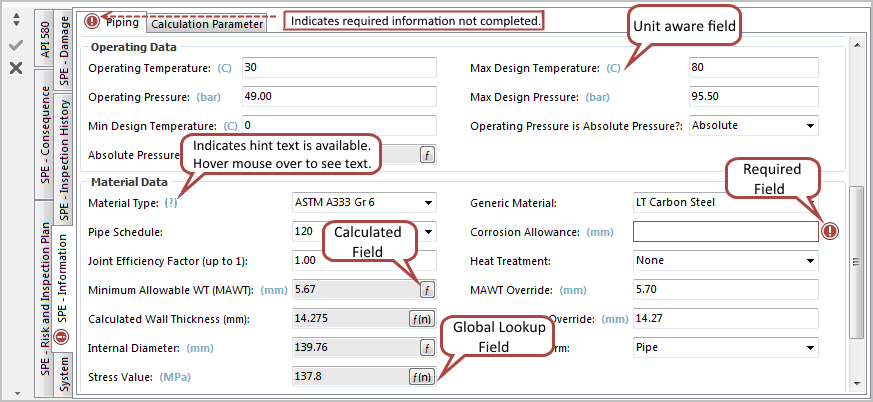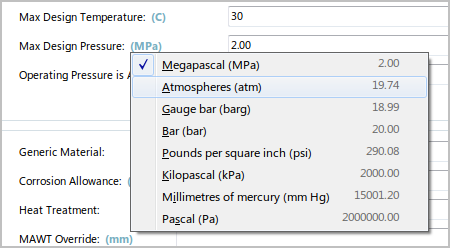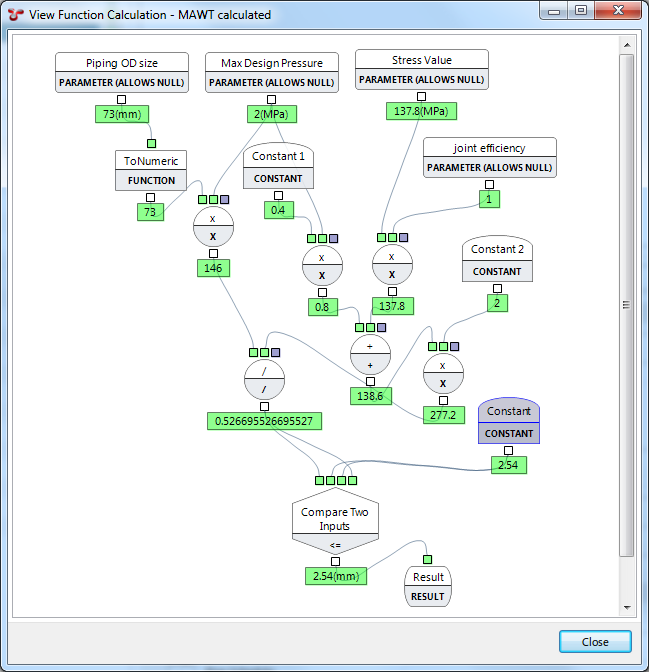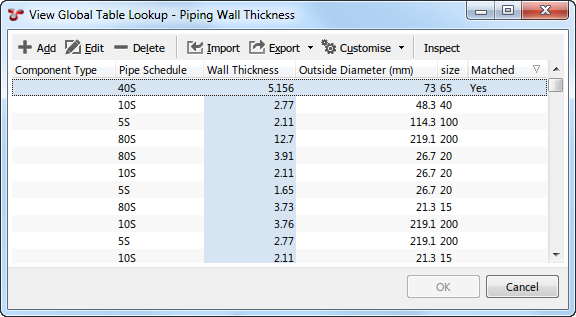Asset Information¶
Asset Information forms retains asset specific information for the currently selected asset. The Asset Information screen is available in two locations in NEXUS IC, from the ASSETS screen and the INSPECTION screen. Functionality in both areas is the same.
An example asset information form is shown here:

Not all Asset Information forms are relevant to all Asset Types. You can configure the relationship between Asset Information forms and Asset Types from Asset Information or Asset Types.
At the left are “sideways” tabs: one for each asset information Category relevant to this asset type. When you click on one of these Category tabs, you will be shown tabs across the top of the form, one for each Asset Information form in this Category that are relevant to this Asset Type. When you click on an Asset Information form tab, you will be shown that Asset Information form. (Some forms may take a moment to display, depending upon the amount of calculation that must be done.)
Tip
If you are navigating through the Asset register and not concerned with the Asset Information, you can minimise the Asset Information pane. This will prevent the information from being loaded, which can be useful when the Asset Information is performing many calculations.
Once you have made changes,  Commit and
Commit and  Cancel will become enabled, and you can use these to save or discard your changes. (If you select a different asset without clicking Commit or Cancel, your changes will be committed.)
Cancel will become enabled, and you can use these to save or discard your changes. (If you select a different asset without clicking Commit or Cancel, your changes will be committed.)
Ordering forms¶
To change the order of the Asset Information forms, simply click, drag and drop the Asset Information tab title to a different location.
Video demonstration:
The following sections detail functionality available to the user from an Asset Information Group form.
Unit Aware Numeric Field¶
When Numeric field are configured in an Asset Information Group, you have an option to define a base unit type for that field. By default, the base unit type is displayed to all users, however, each user has the option to view the numerical value in that field in a different unit type.
Unit aware numerical fields are identified by the label after the field name which states the unit type in blue text.
To view a different unit type in the Asset Information form, click on the unit label, choose an alternate unit type from the popup menu. Please note that NEXUS IC will “remember” your preferred unit type and display that next time you login to NEXUS IC.

Calculated Field¶
Calculated fields are those where the value displayed is derived by a function which has been configured in the database.
Calculated fields are identified by the ![]() icon.
icon.
To view the function for the calculated field, click on the ![]() icon to launch the View Function Calculation dialog.
icon to launch the View Function Calculation dialog.

Please note that the function can not be edited from this dialog. You can, however, right-click on any element and select View to view its internal details.
Hint
When focus is on a calculated field (by clicking in it with the mouse or tabbing into it), any other fields on the same form which are inputs into the function, are highlighted a darker grey colour.
In the example shown below, the ‘Adjusted Safety Consequence’ calculated field has inputs from ‘Asset Area Location’ and ‘Safety Consequence’.
Global Lookup Field¶
Global Lookup fields are those fields where values is returned from a Matrix table. Lookup values are passed into the table and the first value which meets the specified criteria is returned as the value for that field (see section Global Tables for further information on configuring Global Tables)
Global Lookup fields are identified by the ![]() icon.
icon.
Click on the ![]() icon to launch the View Global Table Lookup dialog. This dialog highlights which row matched the Global lookup criteria and is being displayed in the field.
icon to launch the View Global Table Lookup dialog. This dialog highlights which row matched the Global lookup criteria and is being displayed in the field.

Sub-Asset Information Forms¶
Often you will have a list or table of information to place against a single asset. For example, you might have a list of different kinds of threats that apply to this asset, and their severity, etc.
To represent this, we use a sub-form within the form.

You can use in-grid editing to make changes to a row, and use Add and Delete to add or remove rows. If you click on a cell that is a function or global lookup field, you will see the ![]() or
or ![]() button.
button.
The left-most column within the grid is Modified. Any row you make changes to will receive a check mark.
Once you have made changes,  Commit and
Commit and  Cancel will become enabled, and you can use these to save or discard your changes. (If you select a different asset without clicking Commit or Cancel, your changes will be committed.)
Cancel will become enabled, and you can use these to save or discard your changes. (If you select a different asset without clicking Commit or Cancel, your changes will be committed.)
Changes by other users¶
If a change is made in another copy of NEXUS IC or IC-Inspection to data on a form you are viewing, you will see a message saying that this item has been modified by another user.

Click Refresh to load their changes into your copy of the application. (This will discard any changes you have made.) Or click the  button to save your changes. (This will overwrite the changes the other user has made, meaning that they in turn will see this message, and have the opportunity to refresh or save.)
button to save your changes. (This will overwrite the changes the other user has made, meaning that they in turn will see this message, and have the opportunity to refresh or save.)
This feature applies generally throughout NEXUS IC and IC-Inspection, but asset information is perhaps the most common place to see it.